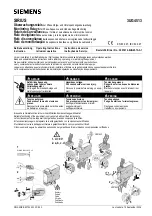
Figure. 5.5.3 - 134. Example of the circuit breaker interrupting life operations.
The function is triggered from the circuit breaker's "Open" command output and it monitors the three-
phase current values in both the tripping moment and the normal breaker opening moment. The
maximum value of interrupting life operations for each phase is calculated from these currents. The
value is cumulatively deducted from the starting operations starting value. The user can set up two
separate alarm levels, which are activated when the value of interrupting life operations is below the
setting limit. The "Trip contact" setting defines the output that triggers the current monitoring at the
breaker's "Open" command.
The outputs of the function are the ALARM 1 and ALARM 2 signals.
The inputs for the function are the following:
• setting parameters
• binary output signals
• measured and pre-processed current magnitudes.
The function's output signals can be used for direct I/O controlling and user logic programming. The
function generates general time-stamped ON/OFF events to the common event buffer from each of the
two (2) output signal. The time stamp resolution is 1 ms. The function also provides a resettable
cumulative counter for the "Open" operations as well as the ALARM 1 and ALARM 2 events. The
function can also monitor the operations left for each phase.
The following figure presents a simplified function block diagram of the circuit breaker wear function.
Figure. 5.5.3 - 135. Simplified function block diagram of the circuit breaker wear function.
A
AQ
Q-S215
-S215
Instruction manual
Version: 2.04
199
Summary of Contents for AQ-S215
Page 1: ...AQ S215 Bay control IED Instruction manual...
Page 249: ...Figure 7 4 151 Example block scheme A AQ Q S215 S215 Instruction manual Version 2 04 248...
Page 269: ...Figure 8 13 172 Device installation A AQ Q S215 S215 Instruction manual Version 2 04 268...
Page 287: ...10 Ordering information A AQ Q S215 S215 Instruction manual Version 2 04 286...
















































